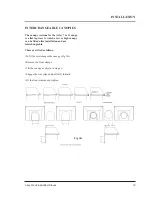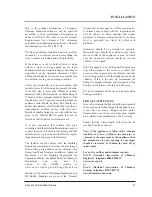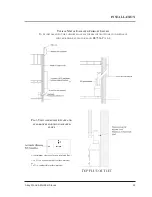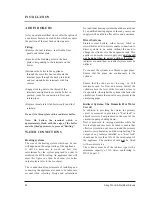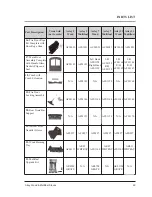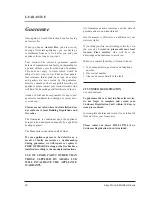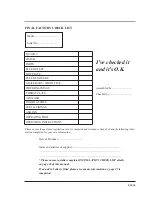
24
Arley Wood & Multifuel Stoves
INSTALLATION
ADD IN BOILERS
Arley wood and multifuel stoves offer the option of
a cantilever boiler or a slab boiler, which occupies
the position of the rear firebox liner panels.
Fitting:
•Remove the fuel retainers, rear firebox liner
panels and throat plate.
•Knock out the blanking discs in the back
plate corresponding to the terminals on the
boiler.
•Introduce the boiler to the appliance
through the main fire door and locate the
terminal pipes through the back plate holes
and seal around boiler terminals with fire
cement.
•Engage locking nuts to the thread of the
terminals and tighten to secure the boiler in
position, ready for connection to flow and
return pipes.
•Replace throat plate (slab boilers only) and fuel
retainers.
Do not fit a throat plate with a cantilever boiler.
Note: On boilers the terminal which is
approximately flush with the edge of the boiler
must be fitted uppermost, to prevent "Kettling".
WATER CONNECTIONS
Heating systems
The size of the heating system which can be run,
will depend on the output rating of the appliance.
It will be necessary to work out heat loss
calculations for the system proposed in order to
establish the kW/hr rating. An appliance that will
meet this figure can then be chosen; (for boiler
outputs please refer to the brochure).
The constructional requirements of installing and
connecting the appliance also need to be taken into
account when selecting. Design and calculations
for individual heating systems should be carried out
by a qualified heating engineer. In many cases your
supplier will be able to offer advice and assistance.
Direct Systems
Stainless steel boilers, either factory fitted or
retro-fitted as add-in boilers enable connection to
direct systems to be made without the need to
change the cylinder or to fit an expansion tank. This
applies to domestic water supply only
and should
not be done when in an area with soft water.
If
radiators are used then an indirect system must be
utilised.
To connect the cylinder use 28mm copper pipes.
Ensure that the pipes rise continuously to the
cylinder.
Ensure that the runs are not too long, i.e. 20ft
maximum each for flow and return. Install the
cylinder above the level of the fire, and as close to
it as possible. (the higher the cylinder the faster the
circulation). Ensure that no valves are present in the
circulating pipes.
Indirect Systems- The Domestic Hot Water
Circuit
In addition to providing hot water the primary
circuit is essential in providing a "heat leak" to
absorb excessive heat produced in the event of the
circulation pump shutting down.
Heat is produced in varying quantities while the
fire is alight and care must be taken to ensure that
effective circulation can occur around the primary
circuit to carry heat away and thus stop boiling. The
output of any radiator installed as a "heat leak"
should not be less than 10% of the rated output of
the appliance. The radiator should
not
be fitted
with a control valve.
The cylinder must be of the indirect type with a
minimum capacity of 110 litres, conforming to
BS 1566 part 1.










